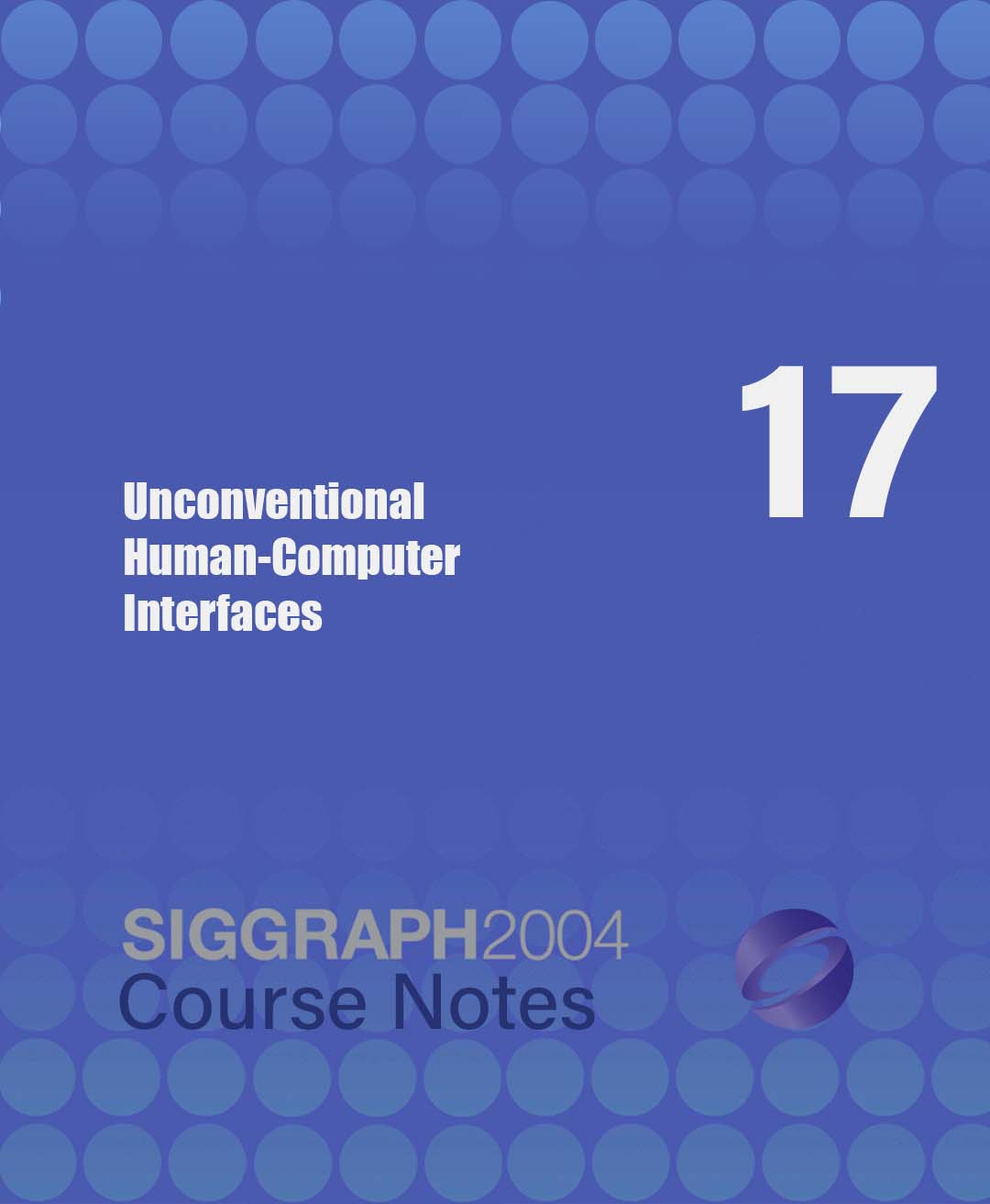“Unconventional Human-Computer Interfaces” by Beckhaus and Kruijff
Conference:
Type(s):
Title:
- Unconventional Human-Computer Interfaces
Organizer(s):
Presenter(s)/Author(s):
Entry Number: 17
Abstract:
Prerequisites
No prerequisites beyond an interest in and basic knowledge of the usage and development of human-computer interfaces.
Intended Audience
People interested in HCI in general, Art Gallery attendees, anyone interested in alternative and experimental usage of computers, and attendees interested in interactive 3D environments.
Description
Most of today’s computer systems integrate several modalities in order to provide output to or allow input from users. These systems are mostly focused on visual and auditory output, and control via hand-coupled input devices. The human body, though, offers many more input and output channels, which can enrich the applications of more “traditional” systems that are mostly bound to the desktop. But they can also allow the emergence of new, more experimental systems that surpass today’s paradigms on both functional and technical levels.
This course focuses on how we can use the potential of the human body in experimental or unconventional interface techniques. It explores the biological or physiological characteristics of the separate parts of the body, from head to toe, and from skin to heart, showing how their sensor (input) and control (output) capabilities can be applied to human-computer interfaces. It demonstrates a wide variety of applications that use proven interfaces as well as extremely experimental systems. Examples vary from desktop-based to mixed and virtual reality, with applications from areas such as art, entertainment, and science.
Attendees learn to look beyond the restrictions inherent in traditional multimedia systems by discovering and understanding how the human body can reveal great potential for new kinds of applications and systems. Human-body theory and practical knowledge on (hardware) interfaces are balanced with many examples to provide a foundation for assessing and using experimental and unconventional interaction.





